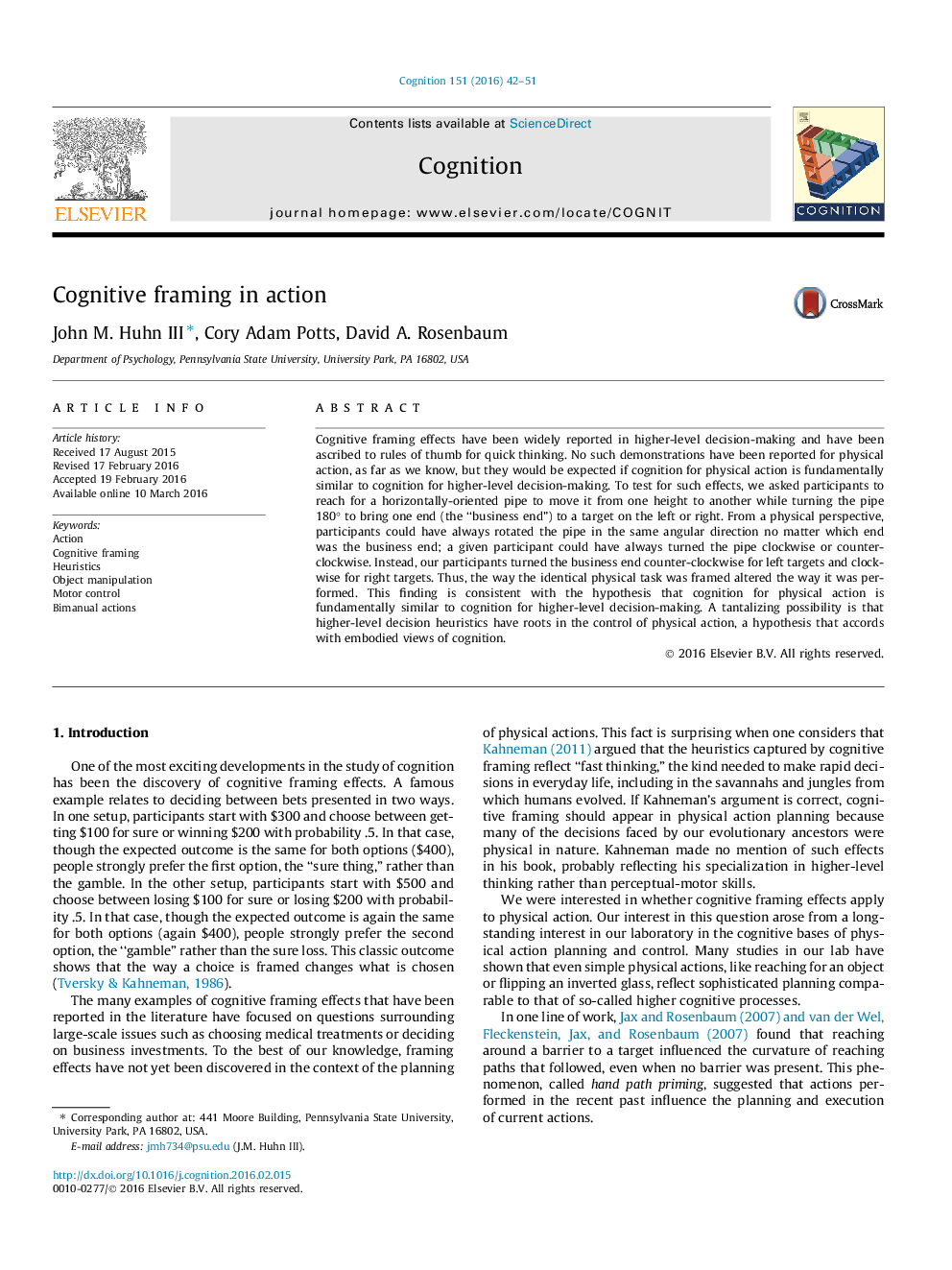| Article ID | Journal | Published Year | Pages | File Type |
|---|---|---|---|---|
| 926407 | Cognition | 2016 | 10 Pages |
•The framing of a motor task altered its execution.•Attention directed to a “business end” of pipe influenced rotation direction.•This framing effect was found for verbal and nonverbal instructions.•The results are the first to demonstrate framing effects in physical action.
Cognitive framing effects have been widely reported in higher-level decision-making and have been ascribed to rules of thumb for quick thinking. No such demonstrations have been reported for physical action, as far as we know, but they would be expected if cognition for physical action is fundamentally similar to cognition for higher-level decision-making. To test for such effects, we asked participants to reach for a horizontally-oriented pipe to move it from one height to another while turning the pipe 180° to bring one end (the “business end”) to a target on the left or right. From a physical perspective, participants could have always rotated the pipe in the same angular direction no matter which end was the business end; a given participant could have always turned the pipe clockwise or counter-clockwise. Instead, our participants turned the business end counter-clockwise for left targets and clockwise for right targets. Thus, the way the identical physical task was framed altered the way it was performed. This finding is consistent with the hypothesis that cognition for physical action is fundamentally similar to cognition for higher-level decision-making. A tantalizing possibility is that higher-level decision heuristics have roots in the control of physical action, a hypothesis that accords with embodied views of cognition.
